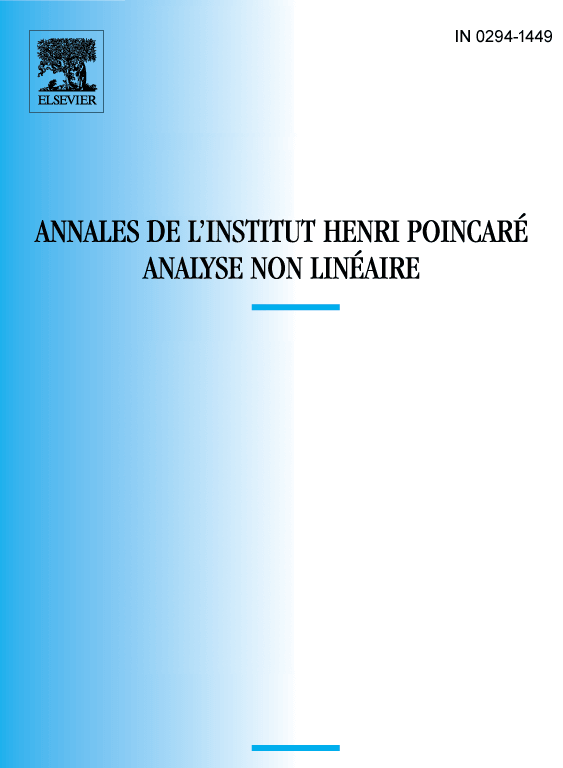The p-harmonic system with measure-valued right hand side
Georg Dolzmann
Mathematisches Institut, Universität Freiburg, Rheinstraβe 10, D-79104 Freiburg GermanyNorbert Hungerbühler
Mathematisches Institut, Universität Freiburg, Rheinstraβe 10, D-79104 Freiburg GermanyStefan Müller
Mathematisches Institut, Universität Freiburg, Rheinstraβe 10, D-79104 Freiburg Germany

Abstract
For we prove existence of a distributional solution of the -harmonic system
where is an open subset of (bounded or unbounded), , and is an -valued Radon measure of finite mass. For the solution we establish the Lorentz space estimate
with and . The main step in the proof is to show that for suitable approximations the gradients converge a.e. This is achieved by a choice of regularized test functions and a localization argument to compensate for the fact that in general .
Résumé
Soit , un ensemble ouvert de (borné ou non borné) et μ une mesure de Radon avec masse finite. On démontre que le système -harmonique
possède une solution distributionnelle. Pour cette solution on établit des estimations dans les espaces de Lorentz.
lci, et . Le pas le plus important est de démontrer que, pour des approximations propres, les gradients convergent presque partout. Celà est fait en choisissant des fonctions de test régularisées et en appliquant un argument de localisation pour compenser que, en général, .
Cite this article
Georg Dolzmann, Norbert Hungerbühler, Stefan Müller, The p-harmonic system with measure-valued right hand side. Ann. Inst. H. Poincaré Anal. Non Linéaire 14 (1997), no. 3, pp. 353–364
DOI 10.1016/S0294-1449(97)80141-2